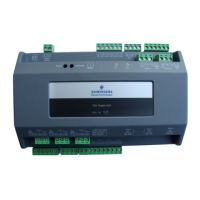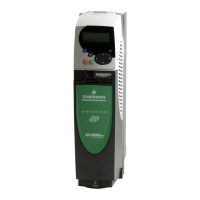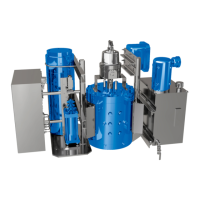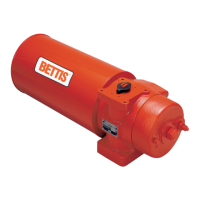HVAC Control Software Overview • 5-13
• Fan Proof Fail - When fan proof failure is
detected, heating and cooling loads are shut down
until the proof failure goes away or the fan proof
alarm is reset or cleared. If the fan is configured to
shut down on a fan proof failure, the system is
restarted by setting the FAN FAIL RST input to ON
or clearing the fan proof failure from the advisory
log.
• SHUTDOWN input is ON - The application goes
into a shutdown mode that turns off the fan. The fan
remains OFF as long as the SHUTDOWN input is
ON.
Control Temperature above Economization Setpoint
If the control temperature is greater than the occupied
cooling setpoint minus the occupied economization delta,
then economization is permitted. If the control
temperature is greater than the unoccupied cooling
setpoint minus the unoccupied economization delta, then
economization is permitted. If the either the control
temperature or the setpoint minus the economization delta
has a value of NONE, then economization is not
permitted.
Low Supply Temp Lockout
If the supply temperature is below “Econ Lock Temp”,
the economizer is disabled.
5.6.14 Determine the Analog
Damper Position
The analog damper position is determined by using a
PID loop. The output is based on the mixed air
temperature compared to the occupied or unoccupied
mixed air setpoint (“Occ CL Mix Temp” or “Unoc CL Mix
Tmp”). The output is limited to the occupied or
unoccupied minimum damper position. If the
economization is inactive, the analog damper is set to the
occupied or unoccupied minimum damper position, based
on the current occupancy state. If the economization is
active, the output from the Economizer PID loop is written
to the analog damper output.
5.6.15 Determine the Digital
Damper Position
The digital damper output turns ON when
economization is active.
5.6.16 Heat Pump Control
If any heat pump stages are defined, they activate in
parallel with the first cooling and heating stages defined.
For example, if one heat pump stage and one heat stage are
defined, when a call for heat occurs, the heat pump stage is
considered stage one and it turns on along with the heat
stage (HEAT STAGE 1). If a second stage of heat is
required, two heat stages should be defined. Likewise, for
cooling, if one heat pump stage and one standard cooling
stage are defined, and a call for cooling occurs, the heat
pump stage is considered cool stage one and it turns on
along with the COOL STAGE 1 output. If a second stage
of cooling is required (not a heat pump stage), two cool
stages should be defined.
5.6.17 Reversing Valve
The reversing valve must be identified as either a
heating or cooling reversing valve by setting the
“Reversing Valve” parameter. When the reversing valve is
set to cooling, the reversing valve turns on when a call for
cooling is active and turns off when a call for heating is
active. Likewise, when the reversing valve is set to
heating, the reversing valve turns on when a call for
heating is active and turns off when a call for cooling is
active. Once the call for heating or cooling is no longer
active, the reversing valve remains in its last known state.
When the AHU application is reset, the reversing valve
output initializes the OFF state.
5.6.18 Compressor Output
When either a call for heating or cooling is active, the
compressor output for the called stage turns on. When the
heating or cooling call is no longer active, the compressor
turns off.
Control Temperature
A control temperature advisory occurs after a user-
specified time delay for both high and low temperature
conditions. This advisory must have associated parameters
to allow the user to specify the high and low advisory
value and the delay, and must be separate setpoints for
occupied and unoccupied mode.
Supply Fan Proof Failure
A supply fan proof failure advisory is generated when
the AHU is calling for the supply fan to be ON and the fan
status input indicates the fan is not operating. This
advisory should have an associated parameter to allow the
user to enable or disable the advisory and a parameter to
specify the time delay before the advisory is activated.
5.6.19 Curtailment
To set up curtailment in the system software, the user
must designate which specific heating and cooling stages
is subject to curtailment. When the power company sends
a curtail command (for example, the value of the
curtailment device switches to “CLOSED”), all stages that
are set up to be curtailed is shut off and locked out.

